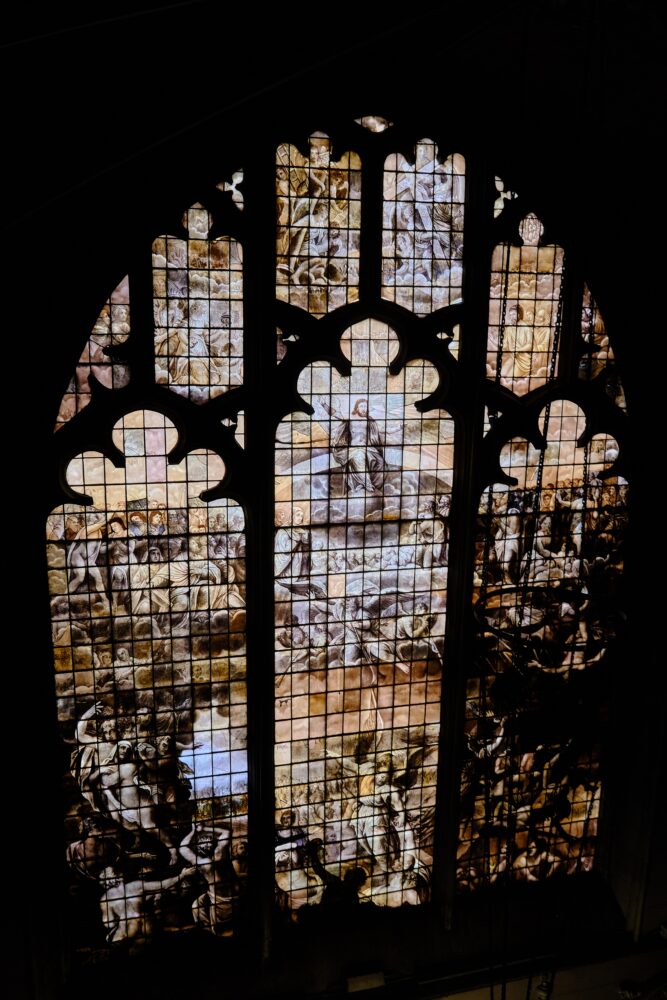


Magdalen approached several artists about restoring the West Window before ultimately giving the commission to the Birmingham-based Francis Eginton. He endowed the West Window with its sepia tint, which is not surprising given his talent in executing prints with this particular tonal range. A multi-talented artist, Eginton’s past achievements in glass painting in Birmingham helped him to secure the project.


Montague Cholmeley, Magdalen fellow and Rector of Saltfleetby, left £300 to replace the old, damaged West Window upon his death in 1785. In this letter to the college bursar, Cholmeley’s relative consents to Magdalen’s desire to repair the window instead of replacing it.


This letter of 18 November 1788 shows uncertainty, perhaps over his will’s wording of ‘adding a new west window.’ Whether Cholmeley disliked or wanted Greenbury’s design changed is unknown, but Magdalen appears anxious to preserve the old window. His relative argues that repairing it does not contradict the gift’s main intent of ‘Ornamenting & Beautifying’ the Chapel.
The Chapel was central in eighteenth-century Magdalen life, as both Cholmeley’s gift and this letter demonstrate. Magdalen’s ‘high church’ leanings, where ritual and sacraments were considered key, may partly explain why the decoration of the Chapel was an important matter. Two such high church supporters were college presidents George Horne (1730-92) and Martin Routh (1755-1854).



Eginton’s letter to college president Martin Routh (1755-1854), from 1794, offers a glimpse of the restoration process’ start and of Eginton’s glass-painting business. He reports he has finished a complete model of the West Window, one of the ‘grandest compositions’ he has seen, restoring the ‘lost figures.’
He mixes praise and humility, showing a savvy in dealing with high-ranking clients. On the letter’s reverse, he lays out his preferred three-instalment billing plan and assures Routh he can deliver on time, which he did in 1794.
Eginton was very proud of his work on the West Window. Others detested it, calling it ‘the worst in Oxford’. They did not like how it looked like a painting on canvas. To them, painted glass should aspire to the medieval-glass style, with figurative and less anatomically correct characters. The college, however, was happy with it and continued business relations with Eginton’s family.